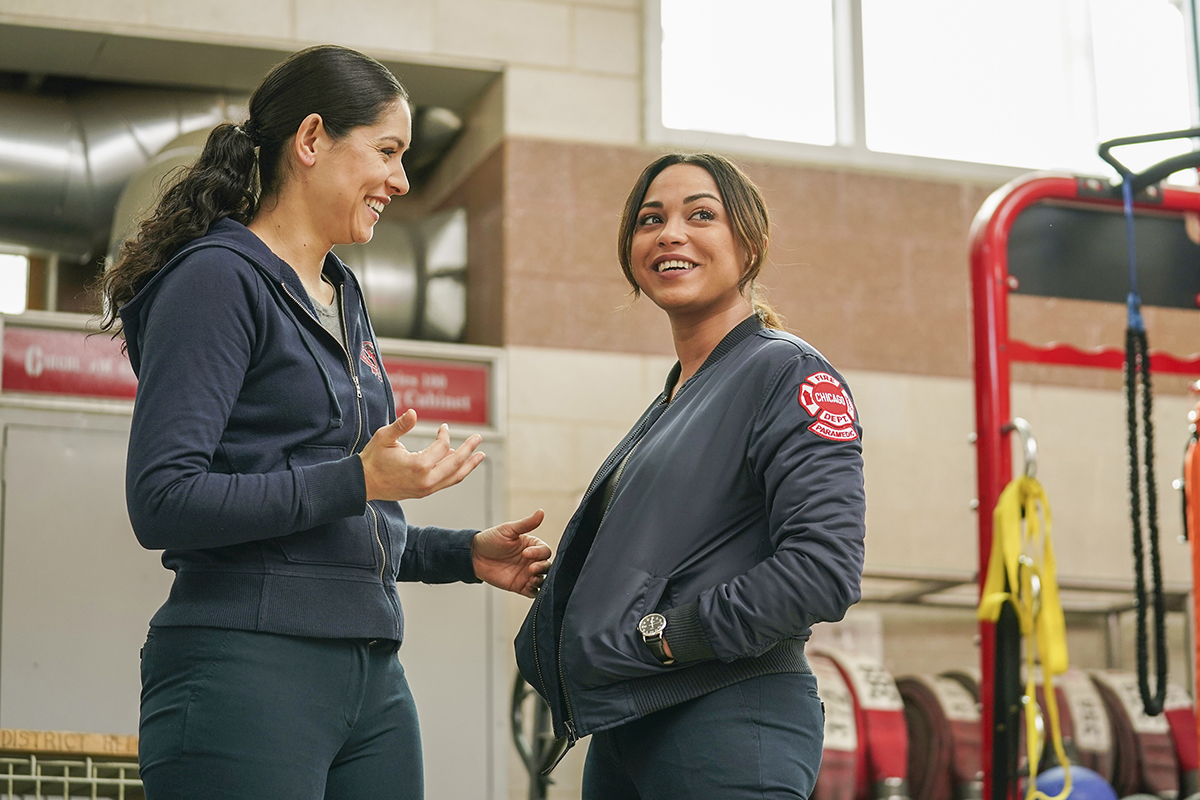
For NBC’s “Chicago Fire,” the first of the now trio of shows that take place inside the same Chicago universe, production designer Craig Jackson was tasked with blending the look and feel for a real firehouse with the unique and ever-evolving demands of a fictional one.
The show’s 2012 pilot was shot on location at the real Chicago Fire Department Engine 18 firehouse, located at 1360 South Blue Island Avenue at Maxwell Street.
Once the series was picked up for a full order, Jackson had the challenge of ensuring visual continuity while also making the show’s recreated firehouse, known as Station 51 on the show, an efficient and flexible shooting space that could accommodate a wide variety of shifting storylines well into the future.

Miranda Rae Mayo as Stella Kidd and Monica Raymund as Gabriela Dawson in a scene set at the ‘Chicago Fire’ firehouse. Many ‘Fire’ scenes are shot on location at a real Chicago Fire Department facility that inspired the production’s set design. Photo courtesy Elizabeth Morris/NBC
The show still shoots regularly at the real Engine 18, namely for exteriors and scenes in the “apparatus bay,” the technical term for the space behind the large garage doors found in fire stations.
While Jackson and his team built an apparatus bay at its Cinespace Chicago Stage 12, the production team often prefers to take advantage of the sweeping city views that can be seen from the real Engine 18 building — something that isn’t possible on the faux version back at the studio.
Before the real Engine 18 moved to the Blue Island site in 2006, it had occupied the same building since 1873, making it the oldest working firehouse in the city at the time. Meanwhile, its new building blends classic firehouse architectural elements such as red brick and carved stone with cleaner, more modern lines.
Jackson had the challenge of ensuring visual continuity while also making the show’s recreated firehouse, known as Station 51 on the show.
Elements from this real life architecture were replicated on Stage 11, including the bold red-framed windows and industrial finishes.
Given that shooting needs to seamlessly jump between fictional and real-life environments, ensuring visual ties between the real and fictional firehouses is always key part of all of the firehouse scenes’ production design and something Jackson always keeps in mind when designing for the show’s firehouse scenes.
Exploring firehouse form and function
Jackson researched Engine 18 and numerous other firehouses across Chicago to explore architectural motifs as well as how spaces were laid out to serve the functional needs of emergency response teams.
